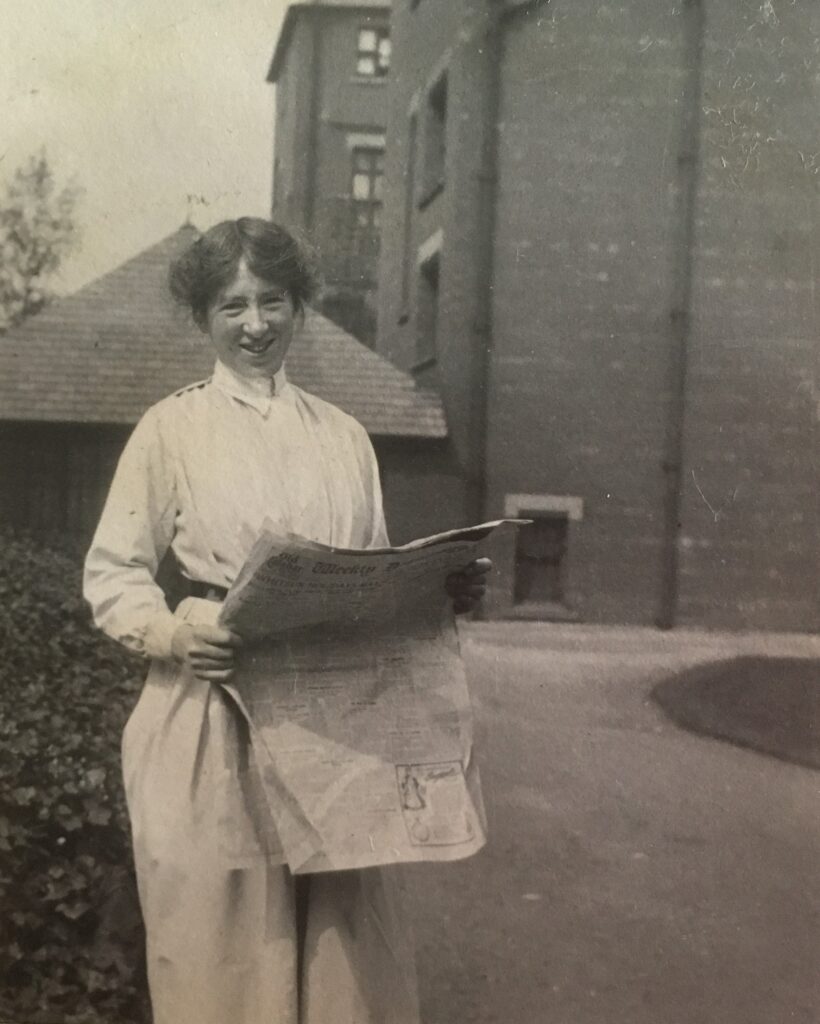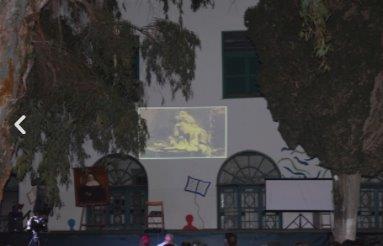Teaching Irish Women’s Writing Abroad
Maureen O’Connor
There are always new audiences for Irish women’s writing of the fin de siècle period, as I discovered when I recently spent six months at the University of Würzburg in Germany, as the Travelling Visiting Professor of Irish Studies, a position funded by the Irish Department of Foreign Affairs, specifically through the Emigrant Support Programme of the Irish Embassy in Berlin. In addition to teaching Irish literature seminars at various levels in Würzburg, from first-year to MA, I travelled to other German universities to deliver talks on Irish literature. I prepared a number of topics to offer the organisers of these events at each institution, and fin-de-siècle topics were chosen by two universities. At the University of Wuppertal, I spoke about ‘First-Wave Irish Women Writers and the Redefinition of Sex,’ focusing on the work of Eva Gore-Booth and Margaret Cousins. That talk is a version of a conference paper I delivered in 2019 at the Society for the Study of Nineteenth-Century Ireland conference in Leicester, ‘Dreams of the Future in Nineteenth-Century Ireland’. In Saarland University, in Saarbrücken, the chosen subject was ‘The Women Writers Who Challenged the Irish Literary Revival: Alice Milligan, Eva Gore-Booth, Hannah Lynch’, based on a contribution to a forthcoming Cambridge University Press collection, Irish Revivals, edited by Gregory Castle. Both talks were delivered in November of 2023.
Read MoreWriting the Aran Islands: The Curious Case of Nurse B. N. Hedderman
Theo Joy Campbell
District Nurse B. N. Hedderman’s 1917 memoir, Glimpses of my Life in Aran, was a puzzle I needed to solve.[i] I first stumbled upon it while researching J. M. Synge and his famous 1903 travelogue The Aran Islands. After reading Glimpses, I was surprised to learn that Hedderman almost never appears in contemporary scholarship about Synge’s book. Scholars often read The Aran Islands in conversation with contemporaneous Aran nonfiction, like Úna Ní Fhaircheallaigh’s Smaointe ar Árainn (Thoughts on Aran) and C. R. Brown and Alfred Haddon’s “The Ethnography of the Aran Islands,” particularly when they are considering Synge in the context of colonialism. Hedderman’s memoir seemed like an illuminating addition to this conversation—she had spent far more time on the islands than Synge or Ní Fhaircheallaigh but her often condescending tone landed closer to that of Haddon and Brown. Hedderman grippingly details the harsh realities of rural poverty, but her claim that the islanders were full of “black ignorance” and her choice to call their customs “barbaric” seem to reproduce Anti-Irish propaganda. Her tone cuts against everything the Irish revival was trying to accomplish. Why would a woman who lived nearly two decades among the islanders, who regularly risked her life to save theirs, replicate the rhetoric of their oppressors? And why was no one talking about her, at least in literary scholarship? Further fuelling my curiosity was the lack of personal details in the book, despite its claim to be a memoir: I did not know whether Hedderman was Catholic or Protestant, whether she knew any Irish at all before arriving on Aran, or even what her first name was, much less how she may have felt about Irish nationalism or the cultural revival movements.
Read MoreWomen Writers of the Catholic Literary Revival in England and Ireland: An Argument for Revaluation
Julia Meszaros
The large-scale socio-cultural and political shifts of the late nineteenth century are reflected in the era’s vibrant literary culture. In Britain and Ireland, the years between 1860 and 1960 saw a particularly dynamic literary resurgence among Catholic writers. Catholic emancipation, marked by the re-establishment of the Catholic hierarchy in 1850, meant that after centuries of persecution and marginalisation British Catholics were finally able to return to public life and the arts. By 1900, Catholic literature was seeing a Revival that we now associate with well-known names such as those of John Henry Newman, Gerard Manley Hopkins, Hilaire Belloc, Robert Hugh Benson, G. K. Chesterton, Graham Greene and Evelyn Waugh.
Read MoreWINIFRED M. LETTS (1882-1972): The Writer I Knew
Bairbre O’Hogan

My interest in the poet, novelist, dramatist and superb children’s writer, Winifred M. Letts, is more of a personal interest than an academic one. I would like her to be rediscovered for herself – not just to claim a stake in literary history, nor to feature in an anthology, but to be remembered for so many facets of her life including, of course, her ground-breaking war poetry, the acclaim her BBC-broadcasted children’s stories won, her status as one of the few women to have had more than one play performed in the Abbey Theatre (kindly drawn to my attention by Shirley-Anne Godfrey of the University of Galway), her beautifully produced religious picture books, her charitable works, the insights into the lives of children, both privileged and underprivileged, which her writings display, her kindness and mentoring, and her strong belief in women and in feminism – a term, incidentally, which she herself used as far back as 1928, when writing for the Commonweal magazine, in relation to Saint Hilda and St Brigit.[1]
Read MoreWith Hannah Lynch in Tinos
Iliana Theodoropoulou
“here is at last forgetfulness of sorrow and unrest”[1]
- Tinos
Hannah Lynch visited Greece twice in her relatively short life. Her Greek island was Tinos. Her first journey there was a long stay of two years, from September (probably) 1885 to September 1887. Her second visit was shorter: six weeks from late March to the beginning of May 1902. In 1885 she travelled from Liverpool to Syros on board the “SS Roumelia” with the Papayianni lines.[2] From Syros Hannah crossed by a smaller boat and reached Tinos. Details of her sea journey are included in her novel Rosni Harvey.[3] Her first letter from the island is dated October 1885,[4] but there are indications in the archive of the Ursuline convent at which she stayed in Loutra, that she had arrived in early September.[5]
Lynch would later publish two articles about Tinos, and two novels in which the island is a central setting. The articles were written while she was living and working at the convent, and both were published in the Irish Monthly in 1886.[6] The novels are Rosni Harvey and her “Greek” work of fiction Daughters of Men, originally published only in English but later translated into Greek by Dimitrios Vikelas. Both were published in London in 1892. Her association with the convent is discussed in a previous blog article here.
Read MoreEmerging Voices 6: Éadaoin Regan

Éadaoin Regan is currently in the final year of her PhD in the School of English and Digital Humanities, University College Cork. Her thesis, A method to the madness?: Representations of psychological disorder in Irish women’s fiction 1870-1914, employs feminist psychoanalysis and postcolonial theory in its analysis of representations of mental illness in Irish New Woman fiction by Charlotte Riddell, Sarah Grand, George Egerton, Somerville and Ross, B. M. Croker and Clotilde Graves. Prior to her postgraduate research, she was awarded an MA in Literature from Ulster University (2015) and a BA (Hons) in English and History from UCC (2012).
Read MoreDaisy Bates: ‘’Saviour of the Aborigines’
Ann Moroney
The Irish writer Daisy Bates (1859- 1951), successful and infamous in equal measure in her time, left a journalistic legacy that remains virtually unknown today. Born in Tipperary in 1859 but residing for the majority of her life in the Australian outback, Bates camped with numerous Aboriginal tribes over a period of forty years, studying their rituals, documenting their languages and campaigning for their protection. Establishing herself as a unique authority on Australian Aboriginal life and culture, she was dubbed ‘the saviour of the Aborigines’ and devoted her career to informing white Australia about the heritage of indigenous peoples.[1] However, Bates’s views and writings eventually consolidated into an infamous stereotype of the white coloniser: that of an eccentric old woman in the desert, publishing controversial articles and governing tribes of people she believed too primitive to withstand the onset of modernity. She viewed herself as an imperial leader devoted to what she described as ‘the last remnant of a dying race.’[2]
Read MoreEmerging Voices 5: Maria Mulvany

Maria Mulvany is an early career researcher funded by an Irish Research Council Postdoctoral Fellowship. Based at University College Dublin (UCD), Mulvany’s project “Ghostly Fictions: Haunting, Trauma and Time in Contemporary Irish Historical Fiction” engages with recent literary, queer and psychoanalytic theories of spectrality to explore how a selection of historical novels by Emma Donoghue, Anne Enright, Sebastian Barry and others frame the relationship between the past and the present in terms of traumatic haunting. It also complicates the synonymic uses of haunting and trauma by exploring the possibilities of pleasure as a supplementary mode of engaging with the spectral presence of the past in the Irish context. In addition to her own research, Mulvany’s work is also indebted to interdisciplinary and collaborative research. She has worked on a range of fixed-term digital humanities projects including the Nation, Gender, Genre Project, Joyce Portrait 100 and the Rosamond Jacob Diaries Project. Most recently, she has been involved in the development of open access teaching resources and curricula as part of the Digital Methods and Data Literacies teaching and learning initiative, funded by the National Forum for the Enhancement of Teaching and Learning in Higher Education. She is currently expanding the temporal range of her earlier research into modes of haunting by looking at some 19th- and early 20th-century Irish women writers of supernatural fiction such as Rosa Mulholland, Charlotte Riddell and Dorothy McArdle and has developed the first iteration of a related teaching resource on these writers which can be found here.
Read MoreWith Hannah Lynch and the Ursulines in Tinos- A Story of Remarkable Women
Iliana Theodoropoulou
‘I enjoy perfect freedom’. [1]

In 1885 Irish writer Hannah Lynch (1859-1904) set out on travels through Greece that would continue over a period of two years. She began this journey by spending more than half a year as a guest at the Ursuline convent in Loutra on the island of Tinos. More than 130 years later – on Thursday evening, August 26, 2021 – Hannah was again a ‘guest’, metaphorically, in the garden of the Ursuline convent where a photograph of her was projected onto the façade. From her viewpoint there, we might say, she once again enjoyed the spirit and the hospitality of the Tinos Ursulines and shared in the celebration of a publication which included a translation into Greek of her essay ‘The Ursulines of Tenos’ (1886).[2] This essay, published in Tinos last summer in The Chronicle of the Ursulines of Tinos,edited by Father Marco Foscolo, is a very valuable testimony of the history of the convent written by this intrepid nineteenth-century Irish writer and traveler.[3]
Read MoreRecovering the Local-colour Stories of London-Irish Writer and Columnist Erminda Rentoul Esler
Giulia Bruna
Donegal native Erminda Rentoul Esler (1860-1924) was a novelist, short-story writer, and journalist who lived and worked in London from 1889. Notably, W. B. Yeats included her in his 1895 articles on Irish National Literature for The Bookman and there referred to her as ‘writing charmingly of Presbyterian life in Ireland’.[i] With his entry on Esler in the Dictionary of Irish Biography and an essay in Kathryn Laing and Sinéad Mooney’s collection Irish Women Writers at the Turn of the 20th Century,[ii] Patrick Maume has recently made important contributions to the rediscovery and reappraisal of this nearly forgotten Irish writer by addressing gaps regarding her family history, religious background, education, and connections with the London publishing milieu.
Read More


